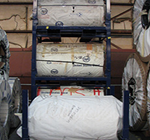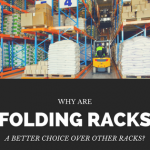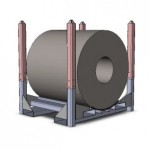Know the Significance and Design Pointers of Pallet Racking 101
Pallet racking basics comprise a storage system set up in a given area, whether horizontally or vertically, to stock the inventory based on the requirements and the area available. This system also comprises material handling equipment used to load and unload or arrange and lift the stored products. This is commonly used in warehouses & storage units on production floors. When setting up a warehouse storage system, understanding the basics of pallet racking is as crucial as the application requirement. Studying pallet racking fundamentals is important from the point of view of efficient storage, safety, and enhancing productivity as well as time to market of products. This post discusses what is pallet racking and offers pointers on legal aspects such as complying to standards and other tips.
About The Author
Pallet Rack Basics
Before getting into the other aspects of pallet racking, here are some regulatory standards a manufacturer needs to comply with.
- When designing a pallet racking system, it is mandatory to comply with OSHA guidelines on storage of material in tiers. It mentions that the tiers must be interlocked for safety purposes and preventing collapse, sliding, and subsequent damage.
- Enough space must be retained in the aisles to facilitate free movement of workers as well as material handling equipment, loading and unloading, and preventing falls and damage.
- The housekeeping storage regulation states that the storage areas must be from flammable, explosive or pest harboring products.
- It is crucial to consider seismic codes which are designed keeping in mind the risk involved in case of earthquakes. These designs comply with the set standards for slabs and depth ratios since multilevel or vertical storage units are becoming more and more common.
Aside from these aspects, various other factors are considered when designing a pallet rack, especially a vertical one with many slabs. Here are some pointers which may be useful.
- Automation and efficient hydraulics in material handling equipment helps avoid manual handling by workers and prevent accidents. This also boosts the efficiency of the warehouse management system.
- The material handling equipment must be simple and easy to use and not have too many tools or switches.
- Crucial factors when designing an efficient storage space include the area available as well as the vertical space which is ceiling height. Other aspects include the height and capacity of the material handling equipment.
- The type of parts or products to be stored and the frequency at which they need to be accessed or unloaded need to be considered.
- You also need to check the expiry date of the products if that applies and arrange them in that sequence on the rack so that the ones with a short shelf life will be used first.
- Aside from vertical, there are various types of racking systems such as floor racking, selective racking, and drive-in racking systems. Selecting the right racking system would depend on the product type, size, weight, quantity, and many other factors.
If you are an OEM looking to set up your own warehouse, you would require racking solutions that are robust, safe, and suits your requirements. This is applicable even if you want to make changes to your existing setup. Ensure you partner with a player who has enough experience in material handling and storage solutions. SPS Ideal Solutions is one of the leading providers of inventory storage, shipping, and material handling solutions. The company provides innovative pallet racking solutions that are tough and resist harsh environments and temperatures.
Related Posts:










